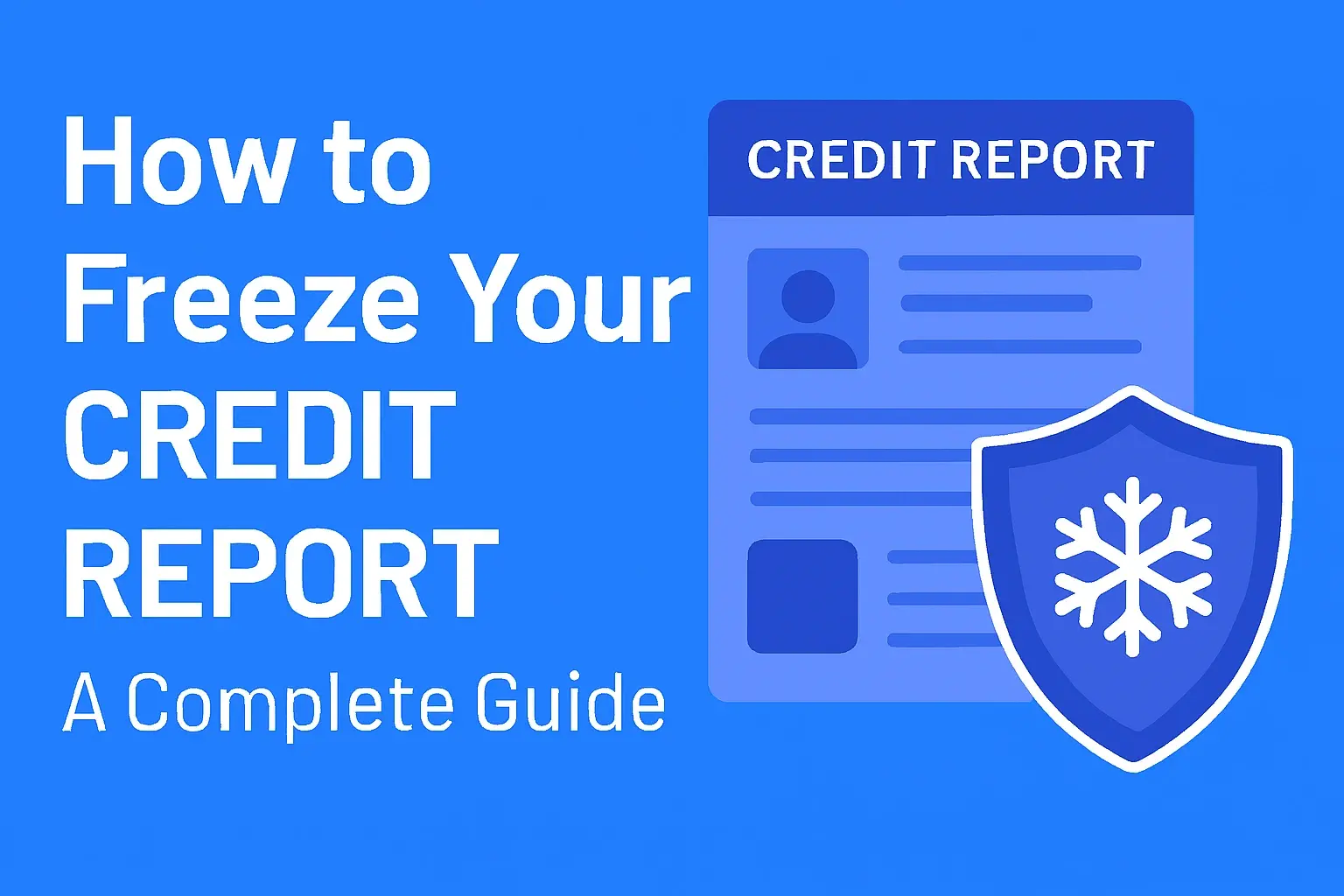-
Posted on: 02 Apr 2025

-
Unlock your financial potential by mastering the art of credit score improvement. This comprehensive guide provides actionable strategies and up-to-date 2025 insights to significantly boost your creditworthiness, opening doors to better loans, lower interest rates, and greater financial freedom.
Understanding Credit Scores: The Foundation of Your Financial Health
In the landscape of personal finance, your credit score is a critical metric that lenders and creditors use to assess your creditworthiness. It's a three-digit number, typically ranging from 300 to 850, that summarizes your credit history and predicts your likelihood of repaying borrowed money. A higher score signifies lower risk, making it easier to qualify for loans, mortgages, credit cards, and even rental agreements, often with more favorable terms. Understanding what constitutes a credit score and why it's so important is the first step toward improving your financial health.
As of 2025, the average credit score in the United States hovers around 715, a slight increase from previous years, reflecting a growing awareness and adoption of sound credit management practices. However, this average masks a wide spectrum of scores, with individuals in the "excellent" range (780-850) enjoying the most significant financial advantages. For instance, someone with an excellent credit score might secure a mortgage with an interest rate that is 1-2% lower than someone with a "fair" score (580-669). Over the life of a 30-year mortgage, this difference can amount to tens of thousands of dollars in savings.
The concept of credit scoring originated in the mid-20th century, with Fair Isaac Corporation (FICO) pioneering the development of credit scoring models. Today, FICO scores and VantageScore are the two dominant scoring systems, each with slightly different methodologies but aiming for the same goal: to predict credit risk. While the exact algorithms are proprietary, the underlying principles are well-understood and form the basis of all credit improvement strategies. By demystifying these principles, individuals can take control of their financial destiny.
The importance of a good credit score extends beyond just borrowing money. In 2025, a robust credit history is increasingly being used by employers for certain job roles, insurance companies to determine premiums, and even utility companies to decide whether a security deposit is required. Therefore, cultivating and maintaining a healthy credit score is not merely about accessing credit; it's about unlocking a broader range of opportunities and reducing the cost of essential services.
Why Your Credit Score Matters in 2025
The financial ecosystem of 2025 is more interconnected than ever, and your credit score acts as a digital passport to financial participation. Here's a breakdown of its pervasive influence:
- Loan Approvals: Whether it's a car loan, a personal loan, or a business loan, lenders scrutinize your credit score to gauge your repayment reliability. A higher score dramatically increases your chances of approval.
- Interest Rates: This is where a good score truly shines. Lower risk translates to lower interest rates, saving you substantial amounts of money over time. For example, a 1% difference on a $300,000 mortgage can save you over $100,000 in interest over 30 years.
- Credit Card Benefits: Premium credit cards with lucrative rewards, travel perks, and cashback offers are typically reserved for individuals with good to excellent credit.
- Rental Applications: Landlords often check credit scores to ensure potential tenants are financially responsible and likely to pay rent on time.
- Insurance Premiums: In many states, insurance companies use credit-based insurance scores to help set premiums for auto and homeowner's insurance, as studies suggest a correlation between credit behavior and claims.
- Utility Deposits: Some utility companies may waive security deposits for customers with a strong credit history.
- Employment Opportunities: For certain positions, particularly those involving financial responsibility, employers may review a candidate's credit report as part of the background check.
The Evolution of Credit Scoring
Credit scoring models are not static; they evolve to better reflect current economic conditions and consumer behaviors. FICO and VantageScore regularly update their scoring models. For instance, the latest FICO Score 10 T incorporates trended data, analyzing how consumers manage their credit over time, not just a snapshot. This means consistent, responsible behavior is rewarded more than ever. Similarly, VantageScore 4.0, introduced in recent years, emphasizes consistency and offers more inclusive scoring for those with limited credit history. Staying informed about these updates can help you adapt your strategies accordingly.
Key Factors Influencing Your Credit Score
Understanding the components that make up your credit score is paramount to developing an effective improvement plan. While the exact weighting can vary slightly between scoring models, the core factors remain consistent. By focusing on these areas, you can strategically enhance your creditworthiness.
Payment History (Approximately 35% of Score)
This is the single most influential factor in your credit score. Lenders want to know if you pay your bills on time. Late payments, missed payments, defaults, and bankruptcies can severely damage your score. Even a single 30-day late payment can have a significant negative impact. In 2025, credit bureaus are more sophisticated in tracking payment timeliness across all types of credit obligations.
- On-time payments: Consistently paying all your bills by their due date is crucial.
- Late payments: The more recent and severe the late payment (e.g., 30, 60, 90+ days past due), the greater the negative impact.
- Collections and charge-offs: Accounts sent to collections or charged off by the creditor are serious red flags.
- Public records: Bankruptcies, foreclosures, and liens have a devastating effect and can remain on your report for up to 10 years.
Credit Utilization Ratio (Approximately 30% of Score)
This factor measures how much of your available credit you are using. It's calculated by dividing the total balance on your revolving credit accounts (like credit cards) by your total credit limit. A lower utilization ratio indicates that you are not overly reliant on credit and can manage your debt responsibly. Experts generally recommend keeping your credit utilization below 30%, and ideally below 10%, for the best results.
Example: If you have a credit card with a $10,000 limit and a balance of $3,000, your utilization is 30%. If you reduce the balance to $1,000, your utilization drops to 10%, which is much more favorable.
Length of Credit History (Approximately 15% of Score)
This factor considers the age of your oldest account, the age of your newest account, and the average age of all your accounts. A longer credit history generally indicates more experience managing credit, which is viewed positively. This is why it's often advised not to close old, unused credit cards, as doing so can shorten your average account age.
- Average age of accounts: The longer you've managed credit responsibly, the better.
- Age of oldest account: An older, well-managed account contributes positively.
- Age of newest account: Opening too many new accounts in a short period can lower the average age.
Credit Mix (Approximately 10% of Score)
This factor looks at the variety of credit you have. Having a mix of different types of credit, such as revolving credit (credit cards) and installment loans (mortgages, auto loans, student loans), can be beneficial. It demonstrates your ability to manage different forms of debt. However, this factor is less critical than payment history and credit utilization, and you should never open new accounts solely to improve your credit mix.
New Credit (Approximately 10% of Score)
This factor considers how many new credit accounts you've opened and how many hard inquiries you've had on your credit report recently. Opening multiple new accounts in a short period or having numerous hard inquiries can signal to lenders that you may be taking on too much debt or are experiencing financial difficulties. A "hard inquiry" occurs when a lender checks your credit as part of a loan or credit card application. "Soft inquiries" (like checking your own score) do not affect your credit.
- Number of new accounts: Opening too many accounts at once can be a red flag.
- Number of recent inquiries: Multiple hard inquiries in a short timeframe can lower your score.
Proven Strategies to Increase Your Credit Score
Improving your credit score requires a strategic and consistent approach. Fortunately, there are well-established methods that, when applied diligently, can lead to significant score increases. The key is to address the factors that most heavily influence your score.
1. Pay All Bills On Time, Every Time
As payment history is the most significant factor, this is non-negotiable. If you have a history of late payments, focus on establishing a pattern of on-time payments immediately.
- Set up automatic payments: Ensure you never miss a due date by automating payments for all your credit accounts.
- Use calendar reminders: If automatic payments aren't feasible, set up calendar alerts a few days before the due date.
- Pay at least the minimum: If you're struggling to pay the full balance, always pay at least the minimum amount due to avoid a late payment mark.
- Contact lenders for grace periods: If you anticipate a late payment, contact your lender *before* the due date to see if they can offer a grace period or payment arrangement.
2. Reduce Your Credit Utilization Ratio
This is one of the quickest ways to see a score improvement. Aim to keep your utilization below 30%, and ideally below 10%.
- Pay down credit card balances: Prioritize paying down the balances on your credit cards. Focus on cards with the highest utilization first.
- Request a credit limit increase: If you have a good payment history with a particular card issuer, consider requesting a credit limit increase. This will lower your utilization ratio if your spending remains the same. Be aware that some issuers may perform a hard inquiry for this.
- Spread out your spending: If you have multiple credit cards, try to spread your spending across them rather than maxing out one card.
- Pay down debt strategically: Consider the "debt snowball" or "debt avalanche" method to tackle multiple debts efficiently.
3. Dispute Errors on Your Credit Report
Mistakes on your credit report can unfairly lower your score. You are entitled to a free copy of your credit report from each of the three major credit bureaus (Equifax, Experian, and TransUnion) annually at AnnualCreditReport.com. Review them carefully for any inaccuracies.
- Identify discrepancies: Look for incorrect personal information, accounts you don't recognize, incorrect payment statuses, or duplicate negative entries.
- Gather evidence: Collect any documentation that supports your claim (e.g., proof of payment, account statements).
- Submit a dispute: File a dispute with the credit bureau online, by mail, or by phone. You must also notify the creditor that furnished the inaccurate information.
- Follow up: The credit bureaus have 30 days (sometimes 45) to investigate and respond to your dispute.
4. Become an Authorized User (with Caution)
If you have a trusted friend or family member with excellent credit, they can add you as an authorized user on their credit card. Their positive payment history and low utilization on that account can then appear on your credit report, potentially boosting your score.
- Choose wisely: Only do this with someone you trust implicitly, as their poor credit management could negatively impact you.
- Understand the risks: Ensure the primary cardholder understands the responsibilities and risks involved.
- Monitor your report: Verify that the account appears correctly on your report and contributes positively.
5. Consider a Secured Credit Card or Credit-Builder Loan
For individuals with no credit history or a damaged credit history, these tools are invaluable for building or rebuilding credit.
Secured Credit Card: You provide a cash deposit (e.g., $200-$500) that serves as your credit limit. The card issuer reports your payment activity to the credit bureaus. After responsible use for a period, you may be able to graduate to an unsecured card and get your deposit back.
Credit-Builder Loan: You take out a small loan, but the funds are held in an account by the lender. You make payments on the loan, and once it's paid off, you receive the funds. Your on-time payments are reported to the credit bureaus.
6. Avoid Closing Old, Unused Credit Accounts
As mentioned earlier, closing old credit accounts can reduce your average age of credit history and decrease your total available credit, potentially increasing your credit utilization ratio. If an old card has no annual fee and you can manage it responsibly, it's often best to keep it open and use it for small, recurring purchases that you pay off immediately.
7. Be Patient and Consistent
Credit score improvement is a marathon, not a sprint. While some strategies, like reducing credit utilization, can yield results quickly, others, like building a long credit history, take time. Consistent, responsible financial behavior over months and years is the most reliable path to a strong credit score.
Managing Credit Responsibly for Long-Term Health
Once you've made progress in increasing your credit score, the focus shifts to maintaining that health and preventing future damage. Responsible credit management is a continuous process that ensures your score remains strong, providing ongoing financial benefits.
1. Regularly Monitor Your Credit Reports and Scores
Staying informed is key. Regularly checking your credit reports and scores allows you to catch errors, identify potential fraud, and track your progress.
- Annual Credit Report: Obtain your free reports from Equifax, Experian, and TransUnion at AnnualCreditReport.com.
- Credit Monitoring Services: Many credit card companies and financial institutions offer free credit score monitoring. While these are usually estimates, they provide a good gauge of your score's general range.
- Set up alerts: Some services offer alerts for significant changes to your credit report, such as new accounts opened or late payments.
2. Understand the Impact of New Credit Applications
Each time you apply for new credit, a hard inquiry is placed on your credit report, which can slightly lower your score. While a few inquiries won't derail your score, a pattern of frequent applications can be detrimental.
- Apply only when necessary: Resist the urge to apply for every "pre-approved" offer you receive.
- Shop around strategically: When applying for loans like mortgages or auto loans, do so within a short timeframe (typically 14-45 days, depending on the scoring model) to have them treated as a single inquiry for rate shopping purposes.
- Distinguish hard vs. soft inquiries: Remember that checking your own credit or pre-qualification offers are soft inquiries and do not impact your score.
3. Build and Maintain a Healthy Credit Mix
While not as impactful as payment history or utilization, having a diverse credit mix can contribute positively to your score. This means having a combination of revolving credit (like credit cards) and installment loans (like mortgages, auto loans, or student loans).
- Don't open accounts just for mix: The key is to have a mix that naturally fits your financial life. Avoid taking out loans you don't need solely to diversify your credit.
- Focus on responsible management: The primary goal should always be to manage all your credit accounts responsibly, regardless of type.
4. Avoid Carrying High Balances on Credit Cards
As highlighted in the credit utilization section, keeping balances low is crucial. Carrying high balances not only hurts your credit score but also incurs significant interest charges, hindering your overall financial health.
- Aim for 0% utilization: The ideal scenario is to pay off your credit card balances in full each month.
- Use a budget: Track your spending to ensure you're not overspending on credit.
- Consider balance transfers: If you have high-interest debt, a 0% introductory APR balance transfer card can help you pay down debt faster, but be mindful of transfer fees and the APR after the introductory period.
5. Understand the Life Cycle of Negative Information
Negative information doesn't stay on your credit report forever. The reporting periods are standardized:
- Late payments: Typically reported for 7 years.
- Collections: Typically reported for 7 years from the date of the original delinquency.
- Bankruptcies: Chapter 7 bankruptcies remain for 10 years from the filing date; Chapter 13 bankruptcies remain for 7 years from the filing date (though the repayment plan itself lasts longer).
- Foreclosures: Typically reported for 7 years.
While negative information eventually falls off, its impact lessens over time, especially if you consistently demonstrate positive credit behavior. The goal is to have positive information outweigh any past negatives.
6. Educate Yourself on Credit Score Factors
The more you understand how credit scores are calculated, the better equipped you will be to manage your credit effectively. Resources like the Consumer Financial Protection Bureau (CFPB) offer valuable, unbiased information.
Special Considerations and Advanced Tips
Beyond the foundational strategies, several nuanced approaches and considerations can further enhance your credit score and financial resilience. These tips are particularly useful for those looking to optimize their credit standing or navigate specific financial situations.
1. The Impact of Medical Debt on Credit
As of 2025, regulations have significantly changed how medical debt is handled on credit reports. Most paid medical collections are no longer included on credit reports. Unpaid medical debt that has gone to collections is typically not reported until it is 360 days old, giving consumers time to resolve issues with insurance or providers.
- Review medical bills carefully: Ensure you're only paying what you owe after insurance has been applied.
- Negotiate with providers: If you have a large balance, explore payment plans or potential discounts for prompt payment.
- Dispute inaccuracies: If you find incorrect medical debt on your report, dispute it immediately.
2. Understanding Credit Freezes and Their Impact
A credit freeze (or security freeze) restricts access to your credit report, preventing new credit from being opened in your name. This is a powerful tool for identity theft protection.
- No score impact: Placing or lifting a credit freeze does not affect your credit score.
- Temporary lifts: You'll need to temporarily lift the freeze when you apply for new credit, which can take a few hours to a few days depending on the bureau.
- Consider fraud alerts: A fraud alert requires lenders to take extra steps to verify your identity before extending credit, which is less restrictive than a freeze.
3. The Role of Rent and Utility Reporting Services
Some services now report rent and utility payments to credit bureaus. While not universally adopted by all lenders, this can be a valuable tool for individuals who primarily rent and have limited credit history.
- Research providers: Services like Experian Boost, RentReporters, or LevelCredit can help leverage these payments.
- Understand the costs: Some services may charge a fee.
- Verify reporting: Ensure the service is reporting accurately and consistently to the credit bureaus.
4. Strategies for Rebuilding Credit After Bankruptcy or Foreclosure
Rebuilding credit after a major negative event like bankruptcy or foreclosure requires patience and a structured approach.
Post-Bankruptcy/Foreclosure Steps:
- Obtain your credit reports: Identify what information is still being reported and ensure accuracy.
- Start with a secured credit card: This is often the most accessible option.
- Consider a credit-builder loan: These loans are designed for individuals rebuilding credit.
- Pay every bill on time: This is the most critical step to re-establish a positive payment history.
- Keep credit utilization low: Aim for very low balances on any new credit cards.
- Be patient: It can take 1-3 years of consistent positive behavior to see significant score recovery.
5. The Nuances of Credit Scoring Models (FICO vs. VantageScore)
While the core factors are similar, FICO and VantageScore have slight differences in how they weigh information and their thresholds.
Comparison Table: Key Differences (Illustrative)
Feature FICO Score VantageScore Minimum Credit History for Scoring 6 months 1 month of history and one active account reported in the last 24 months Impact of Inquiries More sensitive to recent inquiries Less sensitive, especially for rate shopping Trended Data Increasingly important in newer versions (e.g., FICO 10 T) Considered in its methodology Credit Mix Weight Moderate Less emphasized Understanding that different lenders might use different scoring models means that your score can fluctuate slightly. The best approach is to focus on the universal principles of good credit management.
6. Leveraging Credit Score Simulators and Tools
Many financial websites and credit bureaus offer credit score simulators. These tools allow you to input hypothetical changes (e.g., paying off a credit card, opening a new account) and see how they might impact your score. While not perfectly accurate, they can provide valuable insights into the potential effects of different financial decisions.
Conclusion: Your Path to Financial Wellness
Improving your financial health through credit score enhancement is an achievable goal with the right knowledge and consistent effort. By understanding the core factors that influence your score – payment history, credit utilization, length of credit history, credit mix, and new credit – you gain the power to make informed decisions. Prioritize on-time payments, diligently manage your credit utilization, and regularly monitor your credit reports for accuracy. Remember that patience and discipline are your greatest allies in this journey.
In 2025, a strong credit score is more than just a number; it's a gateway to financial opportunities, from securing favorable loan terms to accessing better insurance rates and even improving your rental prospects. Implement the strategies outlined in this guide, from disputing errors and considering secured credit options to responsibly managing your existing accounts. Your commitment to these practices will not only elevate your credit score but also pave the way for lasting financial stability and peace of mind. Start today, and build a brighter financial future.
Faq
1. What are the best ways to increase your credit score quickly?
To boost your credit score fast, pay down credit card balances, make all payments on time, and avoid new hard inquiries. Also, check your credit report for errors and dispute any inaccurate information.
2. How does paying bills on time improve your financial health?
Timely payments account for about 35% of your credit score. Paying bills before the due date builds a positive payment history, strengthens financial discipline, and helps lenders trust your creditworthiness.
3. Can reducing credit card debt raise your credit score?
Yes. Lowering your credit utilization ratio—keeping balances under 30% of your credit limit—can lead to a noticeable score increase. High credit card debt signals risk, while lower utilization shows responsible credit management.
4. How often should I check my credit report to maintain good financial health?
You should review your credit report at least once every four months using free reports from Equifax, Experian, and TransUnion. Regular checks help catch errors early and track your improvement over time.
5. Does having a mix of credit accounts help improve your score?
Yes. A healthy mix of credit—such as credit cards, auto loans, or mortgages—can improve your score by showing that you can handle different types of credit responsibly. Just avoid taking on unnecessary debt.











